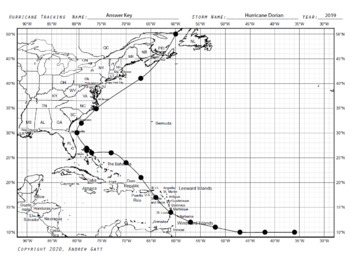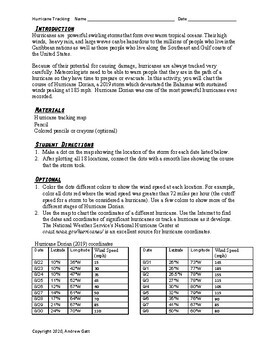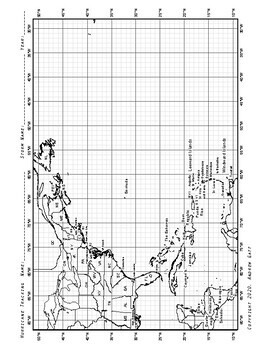Hurricane tracking map with answer keys for five hurricanes
- PDF
What educators are saying
Description
Students learn to plot coordinates of hurricanes using the latitude and longitude of Hurricane Dorian. Daily locations for Hurricane Dorian (2019), rounded to the nearest degree, along with wind speed for each day are arranged in an easy to follow table. The map is an enlarged version of the one used by NOAA for tracking hurricanes. Since the map shows a zoomed-in portion of the Atlantic basin, the latitude and longitude lines are more spread out and easier for students to use. The coordinates for Hurricanes Fran (1996), Katrina (2005), Sandy (2012), and Maria (2017) are included on a separate sheet.
Two other hurricane tracking maps are included in case you want to plot hurricanes that traveled further to the west, or use the full Atlantic basin map provided by NOAA.




